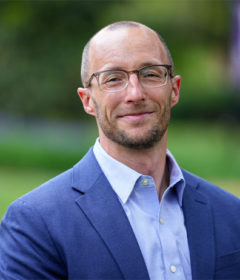A Woman’s Work: Balancing Printmaking and Homemaking on Feb. 9
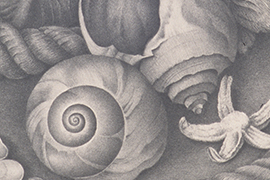
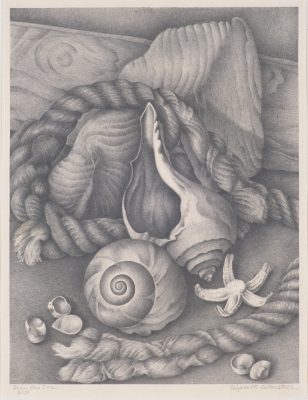
Ask Tonya Curran what she likes best about “Prints by Women,” and she hesitates. Then she walks over to Elizabeth Saltonstall’s “From the Sea,” a softly elegant black-and-white lithograph hanging on the wall at the Hand Art Center, and smiles.
“It could be this,” says Curran, director of Stetson University’s art center, before turning to another of the display’s 46 images, all from the Georgia Museum of Art’s collection. There are too many fine examples of the printmaker’s art, and they are too varied in style and medium to make it easy to choose only one.
There are small, discrete examples in and around the art center’s Gary R. Libby Gallery, among them Edna Reindel’s etching, “Tree with Blossoms,” barely bigger than a postage stamp, yet exquisitely detailed. And there are big, bold, colorful abstractions, among them Minna Citron’s 1971 lithograph, “Columination.”
The quiet realism of objects in Saltonstall’s still-life – the conch shells, a coiled rope, the drying, curling starfish – contrasts vividly with the direct, almost child-like simplicity of Jenne Magafan’s 1940 color lithograph, “Nebraska Landscape.” Made as part of the New Deal’s Depression-era programs that supported artists, Magafan’s landscape features a squat red barn, a radiant windmill, leaded skies filled with windswept clouds and a tiny farmer, shutting the barn door in the ominous vista.
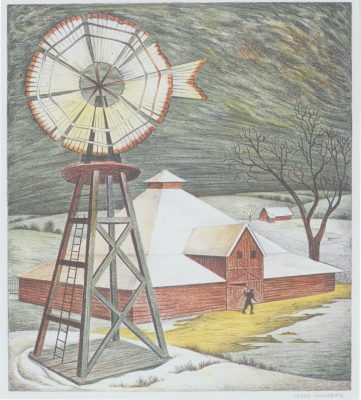
The range is wide in “Prints by Women,” but every piece speaks of a crucial underlying point: every one of the works is by an artist who had to balance home life with art work, as guest speaker Elizabeth Seaton will discuss during a 7 p.m. program on Thursday, Feb. 9, in duPont-Ball Library. Curator at the Marianna Kistler Beach Museum of Art at Kansas State University, Seaton organized “Paths to the Press: Printmaking and American Women Artists, 1910-1960” and wrote the exhibit’s catalogue.
Her Stetson presentation, “Pressing Commitments: 20th Century Women Printmakers and the Demands of Art and Family,” will touch on themes from her earlier book and show, Seaton has said. Those themes explore the ways in which female printmakers had to negotiate the demands of their art and their family life, a consideration far less important to most male counterparts.
And though she will highlight works by Citron, Berthe Morisot and Eleanor Coen, Seaton also may decide to introduce other female printmakers who were active between the late-19th century and today. It’s an interest that came from her background, earning degrees in art history from Harvard and then Northwestern University.
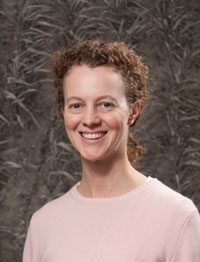
Before becoming curator at the Kansas State University museum, Dr. Seaton worked in her field at Northwestern’s Mary and Leigh Block Museum of Art and at the Art Institute of Chicago. With a doctorate in American art, she expanded her research into related areas, from Kansas culture and governmental support of the arts in the United States to American art between the First and Second World Wars. That includes printmaking in America – and, for this exhibit and program, prints by European women.
That means that Curran’s choice of favorite work is particularly difficult. There is French artist Rosa Bonheur’s soft-focus, atmospheric lithograph of animals at a manger, “The Sheep Fold.” There is “Ducks,” a sketchy scene by Morisot, known equally as a part of the French Impressionist circle and as Edouard Manet’s sister-in-law – and as a collector of her contemporaries’ art. Challenging them for most-favored status, and as a work by a major artist, is a masterful etching by Käthe Kollwitz, “Woman By a Church Wall.”
In the end, who could expect Curran to choose a work to represent the exhibit? Instead, she decided to define the importance of the exhibit as a whole. “It is wonderful, and it helps fulfill our mission. ‘Prints by Women’ supports academic teaching and is a resource for student learning,” said Curran. “It also supports our mission of presenting topics with local and even global appeal.”
Elizabeth Seaton’s Curator Talk, “Pressing Commitments: 20th Century Women Printmakers and the Demands of Art and Family,” is set for Thursday, Feb. 9, from 7-8 p.m. in Room 25L of the duPont-Ball Library, on Stetson University’s DeLand campus. Details: 386-822-7270.
- -By Laura Stewart

